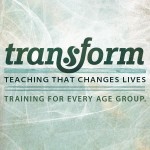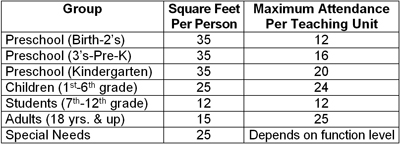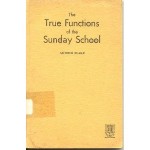Has this ever happened to you? After teaching a Bible study session, you mentally review the session:
- Read all of the Scripture passage
- Covered all the outline points
- Used all of the planned teaching activities
So why do you feel like it didn’t make a difference with your members – that you were only “checking off the squares”?
 I am an avid list-maker, but I have learned when teaching that it’s important to do more than check off the squares. God’s Word has the power to make a difference in people’s lives. And God has called me, as a teacher, to help others discover the truths of the Bible. I want to see lives transformed.
I am an avid list-maker, but I have learned when teaching that it’s important to do more than check off the squares. God’s Word has the power to make a difference in people’s lives. And God has called me, as a teacher, to help others discover the truths of the Bible. I want to see lives transformed.
The following statement (author unknown) has helped me focus on what I want to happen during Bible study: We aren’t just teaching the Bible; we are teaching people the Bible.
- We aren’t just teaching the Bible—This first part focuses on biblical content, context, historical settings and customs. It’s easy for the session to become a history or literature lesson when Bible knowledge is the primary teaching aim
- We are teaching people the Bible—This part of the statement is a reminder to consider the group members’ situations and needs. 1) Build relationships in order to know and minister to members. 2) Use content, context, and historical setting to provide a foundation for understanding what the Scripture is saying. 3) Also use teaching methods that help learners discover biblical truths for themselves personally. An encounter with God through His Word impacts how learners think and live. It makes a difference. Their lives are transformed!
 One Idea for Transformational Teaching—How can a teacher go beyond teaching information to helping people experience transformation? One key element is using stories. Teaching the grand story of the Bible is exciting, seeing how God’s story intersected with the peoples of ancient times. In addition, help members see how their personal stories fit into God’s story. Finally, provide opportunities for members to share their stories with each other for encouragement and inspiration. (Read more about using stories in the free download of The Discover Triad: Three Facets of a Dynamic Sunday School Class.)
One Idea for Transformational Teaching—How can a teacher go beyond teaching information to helping people experience transformation? One key element is using stories. Teaching the grand story of the Bible is exciting, seeing how God’s story intersected with the peoples of ancient times. In addition, help members see how their personal stories fit into God’s story. Finally, provide opportunities for members to share their stories with each other for encouragement and inspiration. (Read more about using stories in the free download of The Discover Triad: Three Facets of a Dynamic Sunday School Class.)
Explore Transformational Teaching In-Depth—Obviously there are other elements in teaching for transformation. Watch for other blogs on this site. If you are within driving distance of Kansas City on August 25 or Atlanta (Dacula) on September 22, plan to attend the one-day TRANSFORM! Through Bible Teaching event. Go to www.lifeway.com/transform for registration and information. You won’t be sorry.
_____________________________________________________
Marie Clark is Team Leader for the Bible Teaching & Discipling Team, Kansas-Nebraska Convention of Southern Baptists. In addition to her passion for helping people teach people the Bible, she also enjoys her grandchildren and working in the yard.






